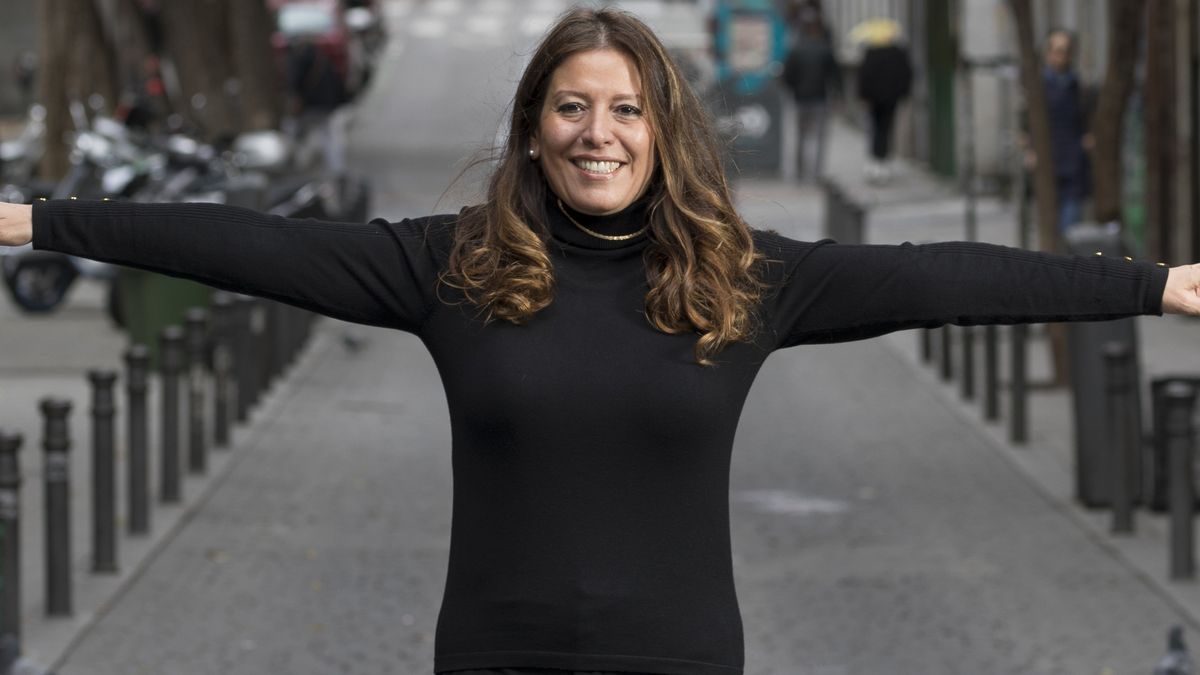After fourteen successful historical romantic novels, in “The suns of Santiago” (Planet) Viviana Rivero She challenges her readers by mixing the struggle of a woman before Christ with the struggle of a girl against a dystopia that may be yet to come. Rivero from Córdoba currently divides her year between Spain and Argentina. Scope He spoke with her.
Journalist: Weren’t you worried about switching to the dystopian genre after a series of successful historical romantic novels?
Viviana Rivero: No, let them give my novels the genre they want, let them define them as historical romantic, if they want, because my books have something of a thriller, of romance, of investigation that, depending on the case, can be not only historical but, for example , medicine or motorsports. This is another book of mine, meaning it has everything. In “The Suns of Santiago” there is dystopia, but also history and romance. From the beginning I looked for each novel to be a different world. I handed out one a year, it was good to renew myself.
Q: How do you unite two women separated by more than two millennia?
VR: Cazue is a woman from the Asturian tribe, from the times of the Roman Empire, when Octavio became emperor after the assassination of Julius Caesar. In my previous book, “Apia of Rome”, where the story of the young Appia Populus, married to a pearl merchant, had led me to tell about Cleopatra, and the confrontations between Mark Antony and Octavian for power. Opposite this is dystopia, what is to come and, if possible, prevented. Thirty years from now, in 2055, Eme, a 19-year-old girl, lost her parents. The repeated epidemics made the elderly disappear. Eme left her boyfriend and is alone. Cazue and Eme are going to communicate in an unexpected way. History will reveal to them how they are united. For now, they are united by the same space, which over time became a pilgrimage trail, the Camino de Santiago. Furthermore, they both care about Las Médulas in different ways.
Q: What does that gold deposit that the Romans discovered in Spain have to do with it?
VR: Las Médulas was the largest open pit gold mine in humanity; It belonged to the Astures, the tribe of that area who, having gold, practiced barter. The Romans appropriated them, and used the gold to mint coins with Octavian’s face. This discovery led the Asturians to interact with other peoples. That’s where Cazue is from, and through her we know about her family, what she did, what the arrival of the Romans was like, why her son was stolen from her, who the father was, and the intense battle she undertakes to get him back.
Q: How does Eme intervene from the future?
VR: Eme, the red-haired girl who is on the cover of the book, in 2055 will discover what she has to do with Las Médulas. Now they have placed a chip the size of a grain of rice under his skin and it connects his mind, through a kind of Google, with the networks, giving him data and knowledge. Sometimes he gets indignant because he cannot distinguish his thoughts from those of the networks. The system has a kind of Matrix that unites the beings of the planet. In crisis, Eme removes her chip, and that puts her in contact with El Movimiento, a group of resistance to technological impositions. And the Movement orders Eme to carry out an act of sabotage on the Camino de Santiago.
Q: Are you environmentalists against technology?
VR: They go for more, they are against the system. At that time the world will be in the hands of twelve families, the richest on the planet. They manage technology, food, supermarkets, pharmacology, weapons, presidents, who tell them what to do and what not to do. Technology makes it easy for them to manage people, it is a totalitarianism that claims not to be. One of the great future dangers will be losing individuality.
Q.: Why sabotage on a mystical path?
VR: At that time, people no longer moved freely, and the Catholic Church has managed to allow them to do so on the Camino de Santiago. I did the French trail that way. A strong experience of encountering nature that was inspiration for my book. Eme goes as a pilgrim to carry out the sabotage and there she meets a man who she discovers is going to prevent that from happening. Along the way Eme has certain supernatural experiences, but when he arrives at the cathedral he is disappointed, he discovers an artificial world. That was my experience.
Q.: What did you feel was central while unfolding the stories of Eme and Cazue?
VR: What unites their two stories. The experience they were having of rediscovering themselves through nature. Eme’s nature was absolutely urban. Daughter of Argentine parents, she was born in Paris, she loved that city, but she could not find meaning in her life. When you walk the Camino de Santiago you realize what is important, you discover that nature speaks to us. Something that Cazue already knows for two thousand years: alone, desperate, without food, she is saved by the forest, the water of the river, the plants she can eat. He resumes his dialogue with nature. Following Eme and Cazue I arrived to where these characters told me.
Q: What is this novelistic approach?
VR: It is an important moment in the lives of the characters, how it happens to us in our lives. I got here because I am here, because of all this that happened to me, and that is what had to happen to me. A moment of realization? Not necessarily, not always. It is a moment of plenitude, of being able to understand everything that happened.
Q: And now what do you plan to write?
VR: “Apia of Rome”, which is sold in many countries, made me want to continue with the Roman world.
Source: Ambito
I am an author and journalist who has worked in the entertainment industry for over a decade. I currently work as a news editor at a major news website, and my focus is on covering the latest trends in entertainment. I also write occasional pieces for other outlets, and have authored two books about the entertainment industry.




